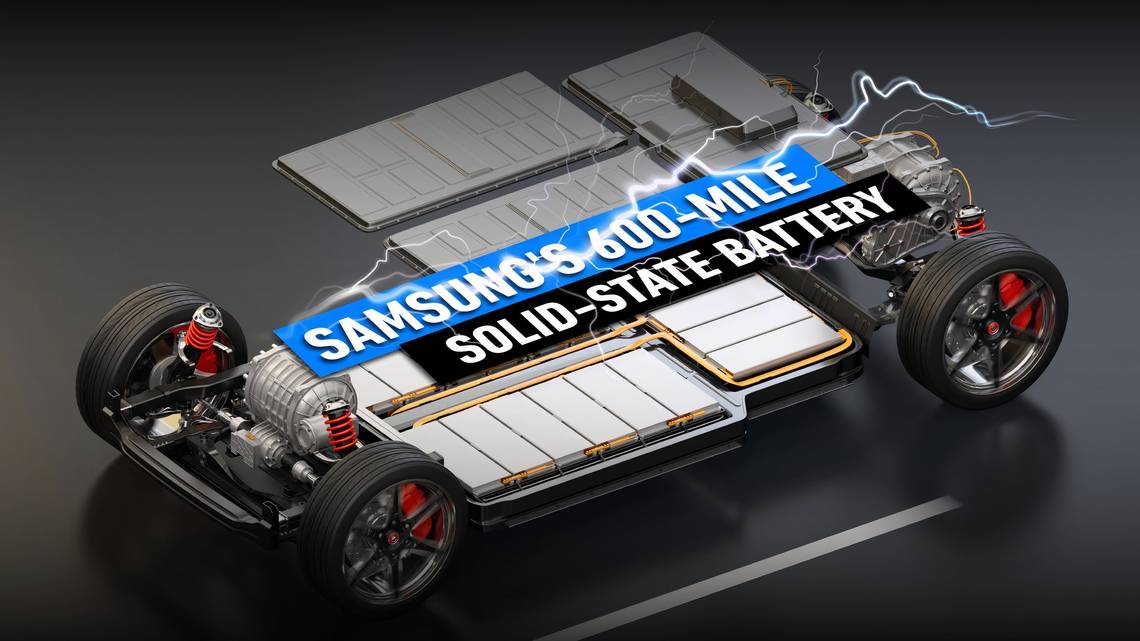
Posted on 10/24/2024 5:41:01 AM PDT by Red Badger

Summary:
* Samsung's 600-mile solid-state battery could revolutionize EVs, offering longer range and faster charging times, setting new standards.
* Solid-state batteries replace lithium-ion, boosting energy density and safety, making them a game-changer in the EV market.
* Challenges of scaling production and cost remain, but collaboration among companies may accelerate the adoption of solid-state batteries in the future.
=================================================================
As electric vehicles (EVs) continue to become a bigger and bigger part of the automotive industry, snagging an eight percent market share according to recent data, one of the biggest hurdles remaining for dominance is battery technology. Sure, something like hydrogen fuel cells is a potentially viable alternative in the future, but likely the next big thing in the world of EVs is solid-state batteries, and companies are Samsung are pushing the limits of what a battery-powered EV can do.
At the SNE Battery Day 2024 event, Samsung stole the show with the announcement of its groundbreaking 600-mile solid-state battery. Sending ripples through the EV segment and the automotive industry as a whole, the promise of batteries this capable is a significant milestone toward an all-electric future. As the world shifts towards sustainable transportation, Samsung's latest advancement could redefine what consumers expect from electric vehicles, potentially setting new standards for range, safety, and performance.
Why Samsung's 600-Mile Solid-State Battery Is A Game-changer
Breakthroughs In Battery Technology
Solid-state batteries, like the one from Samsung, are not only more capable than the standard lithium-ion ones we're used to, but they're also safer. By replacing the liquid electrolyte found in traditional lithium-ion batteries with a solid one, Samsung has increased the energy density to 500 watt-hours (Wh) per kilogram (kg), roughly double what a regular EV battery is rated for. This technology is also safer, reducing the risk of overheating and potential fires, which has always been a major concern of EV batteries.
Potential Impact On The EV Market
The introduction of a 600-mile solid-state battery has the potential to change the electric vehicle market and buyer perception. Range anxiety, long a barrier to wider EV adoption, could become a thing of the past as drivers gain confidence in the range capabilities of these new batteries. With fewer charging stops required on long trips, EVs may become more practical and appealing to a wider breadth of drivers, particularly those who have hesitated to make the switch from gasoline-powered cars.
Outside of just consumer perception, Samsung's new battery could help jump-start a new wave of innovation across the EV industry. As other manufacturers race to develop their own solid-state batteries, the competition could lead to rapid advancements in battery performance, cost, and availability. This could speed up the transition to electric vehicles on a global scale, helping to meet the growing demand for eco-friendly transportation while setting new industry standards for range, efficiency, and safety.
The Technical Details Of Samsung's New Solid-State Battery
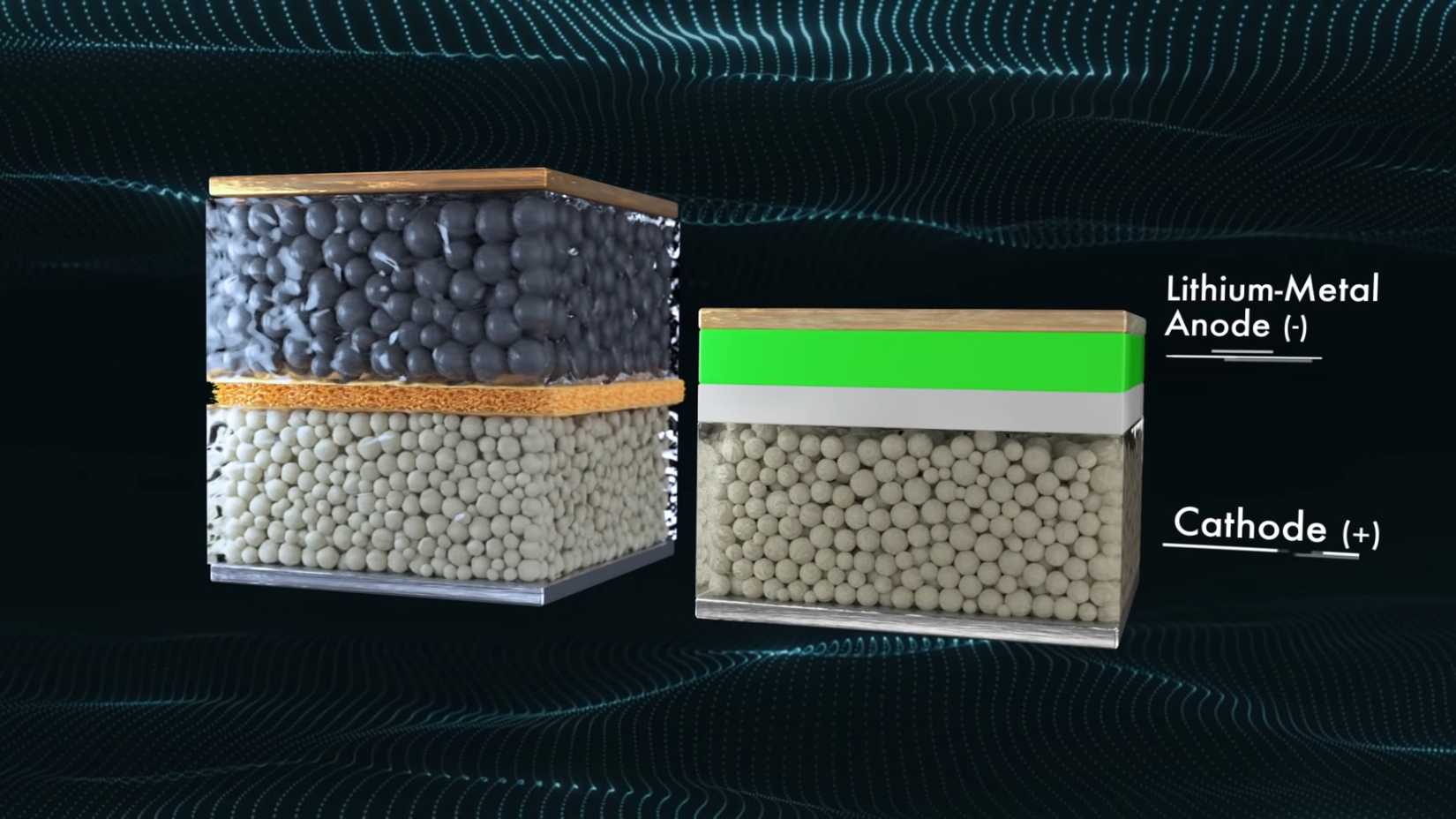
How Solid-State Batteries Work
Solid-state batteries operate on a fundamentally different principle compared to traditional lithium-ion batteries found in most EVs today. In a solid-state battery, the liquid electrolyte used to transport ions between the anode and cathode is replaced with a solid electrolyte, a much more energy-dense material. Samsung's design specifically employs a solid sulfide electrolyte, which is known for its high ionic conductivity and stability.
Additionally, solid-state batteries offer improved longevity and efficiency. Samsung's battery, for instance, is proclaimed by the brand to have a lifespan of up to 20 years. This technology also allows for faster charging times, as the solid electrolyte can handle higher voltages and currents without the risk of overheating. Together, these advancements make solid-state batteries a promising option for the next generation of electric vehicles.
Key Features Of Samsung's Battery
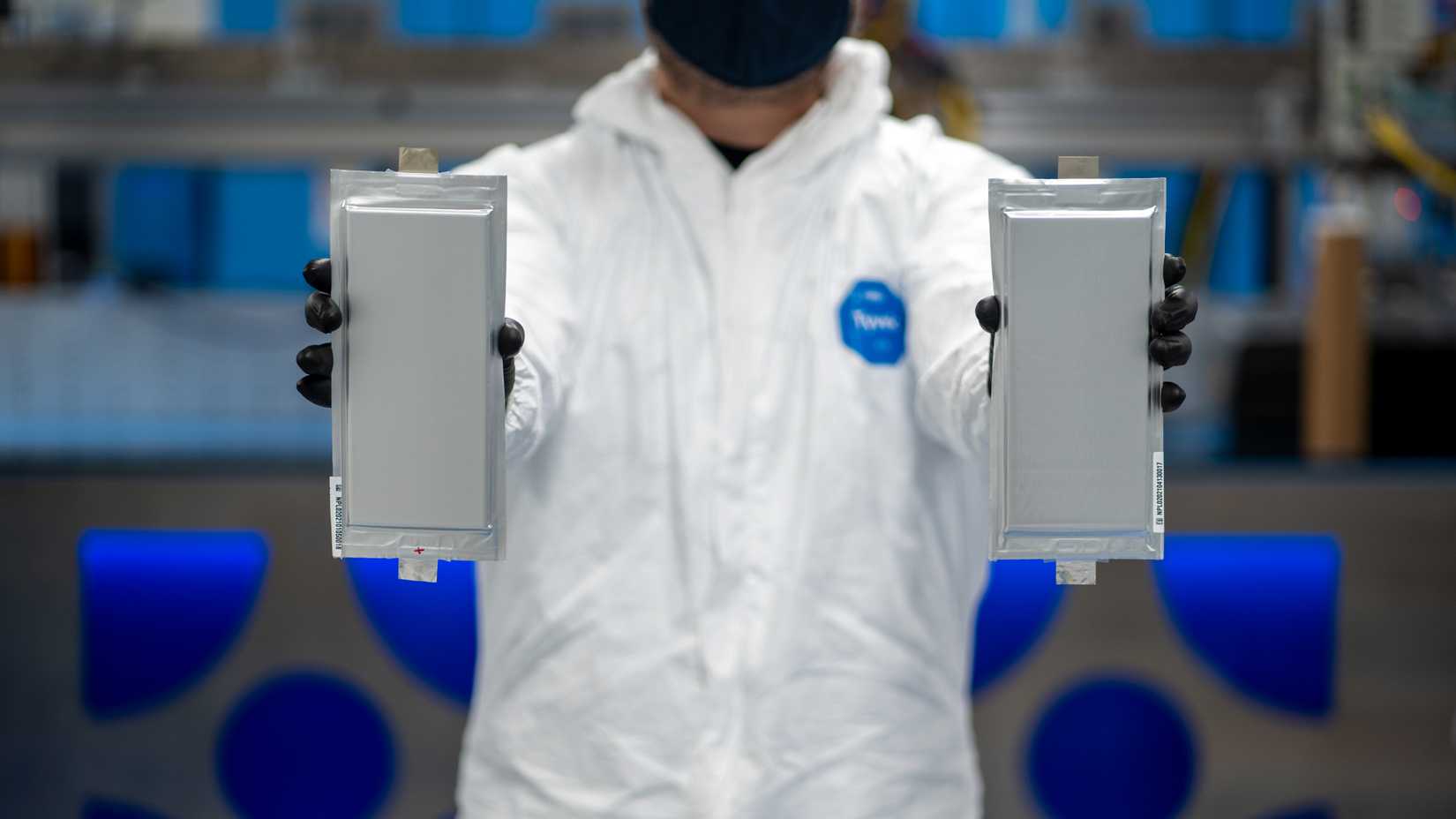
Solid State Batteries
Samsung's new solid-state battery hits the ground running with several key features that immediately jump out to anyone in the EV community. The most glaringly obvious of these is its 600-mile range, a step above what current lithium-ion batteries can do. This extended range addresses one of the biggest challenges in the EV market, range anxiety, by providing enough juice for long trips without frequent recharging. Coupled with this impressive range is the battery's estimated nine-minute charging time to 80-percent capacity, which is crazy to think about. For reference, some of the fastest-charging cars on the market take around 15 to 20 minutes (or more) to hit this mark.
Samsung's battery also boasts a remarkable lifespan of up to 20 years, far exceeding the longevity of traditional batteries. Tesla's current batteries, for example, degrade around 12 to 15 percent after 200,000 miles, and are expected to last around the same number of years. Replacing an EV battery is one of the most expensive repairs possible, and a lifespan like this reduces the likelihood of needing to do it. Further, solid-state batteries like this are smaller and lighter than their lithium-ion counterparts, enhancing efficiency and performance even more.
Challenges And Potential Issues With Solid-State Batteries
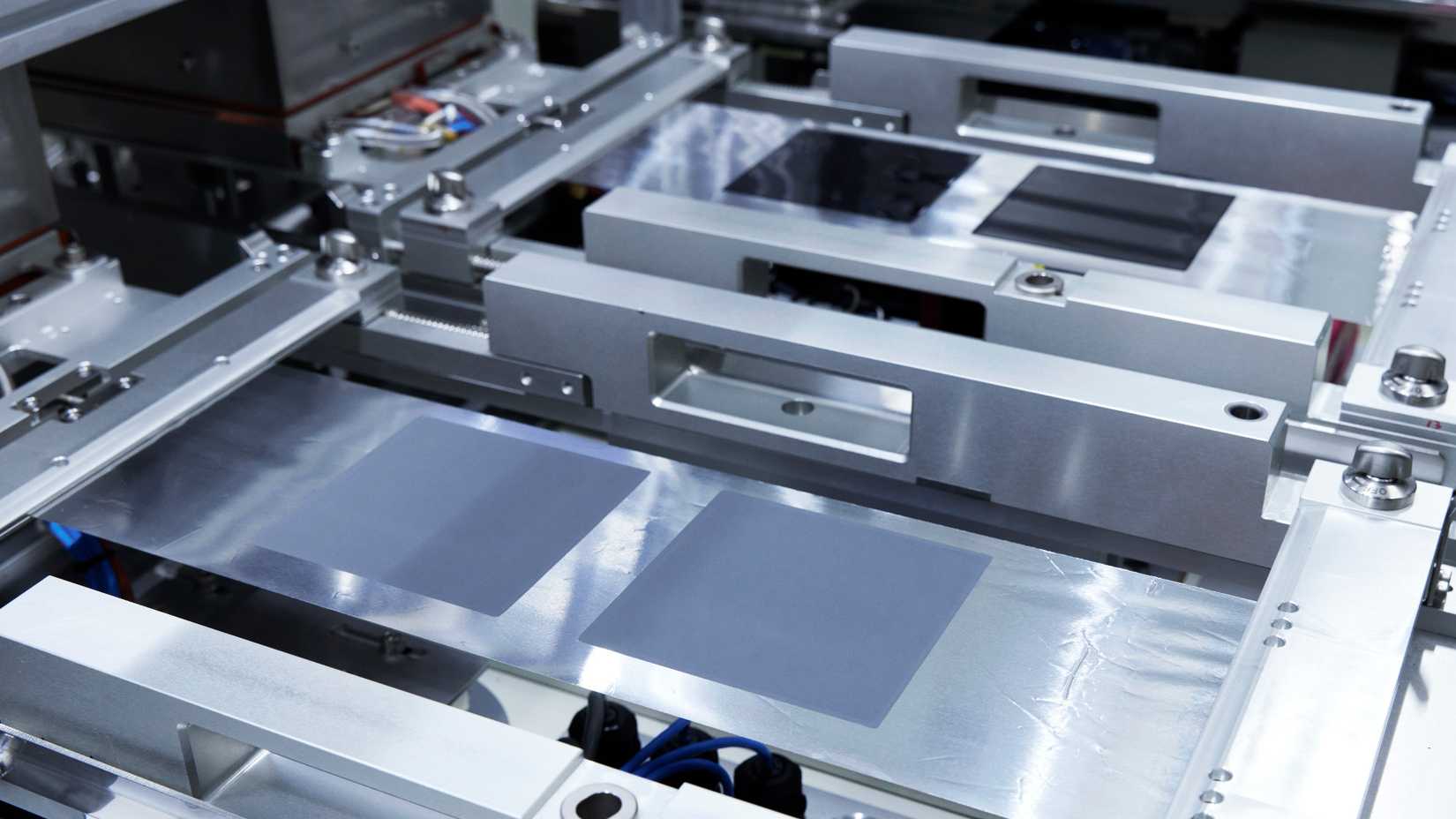
Current Limitations And Obstacles
One of the primary obstacles facing the takeover of solid-state batteries is the high cost of production. The materials and processes required to manufacture solid-state batteries are currently more expensive than those for traditional lithium-ion batteries. This cost factor could make it difficult to produce these batteries at scale and keep prices competitive for consumers in the near term.
Another limitation is the complexity of scaling up production. While lab-scale production has shown great potential, manufacturing solid-state batteries on a large scale presents significant technical challenges. Issues such as material consistency and ensuring the longevity of the solid electrolyte still need to be fully addressed. These hurdles could delay the mass production of solid-state batteries, pushing back their availability in the market.
What Samsung Isn't Talking About
While Samsung's solid-state battery is a remarkable innovation, there are potential concerns that haven't been widely discussed. One issue is the real-world performance of these batteries under various conditions. Factors like extreme temperatures or heavy usage over time could impact the battery's efficiency and longevity, raising questions about how well these batteries will perform in everyday scenarios. That said, Samsung delivered the first batch of batteries earlier this year and has received positive feedback to this point.
Another potential concern is the recyclability of solid-state batteries. The materials used in these batteries may require new recycling processes if produced at scale, which are not yet fully developed. This could pose environmental challenges if these batteries become widely adopted without a clear plan for their end-of-life management. Even though Samsung is projecting a two-decade lifespan for these batteries, they will eventually reach their end of life. And it's vital to have a plan in place for when that day comes, long before it gets here.
The Future Of Solid-State Batteries In The EV Industry
Ongoing Research And Development
The development of solid-state batteries, including Samsung's 600-mile version, marks just the beginning of what could be a new era in EV technology. Research and development efforts are ongoing, with various companies exploring ways to improve the efficiency, safety, and cost-effectiveness of EV batteries. Innovations like alternative solid electrolytes and new manufacturing techniques are being investigated to overcome current limitations and pave the way for large-scale production.
One thing that is likely to contribute to this technology coming even faster is collaboration between brands and companies. With Samsung seemingly leading the way at this point, it's reasonable to expect other manufacturers to follow suit, and either try to tag along with Samsung or join forces to catch up to the Korean tech company. Either way, for consumers and enthusiasts, the potential for big businesses to start pooling resources and effort to make this happen is a good thing. Competition breeds speed, efficiency, and lower costs.
Market Adoption And Consumer Perception
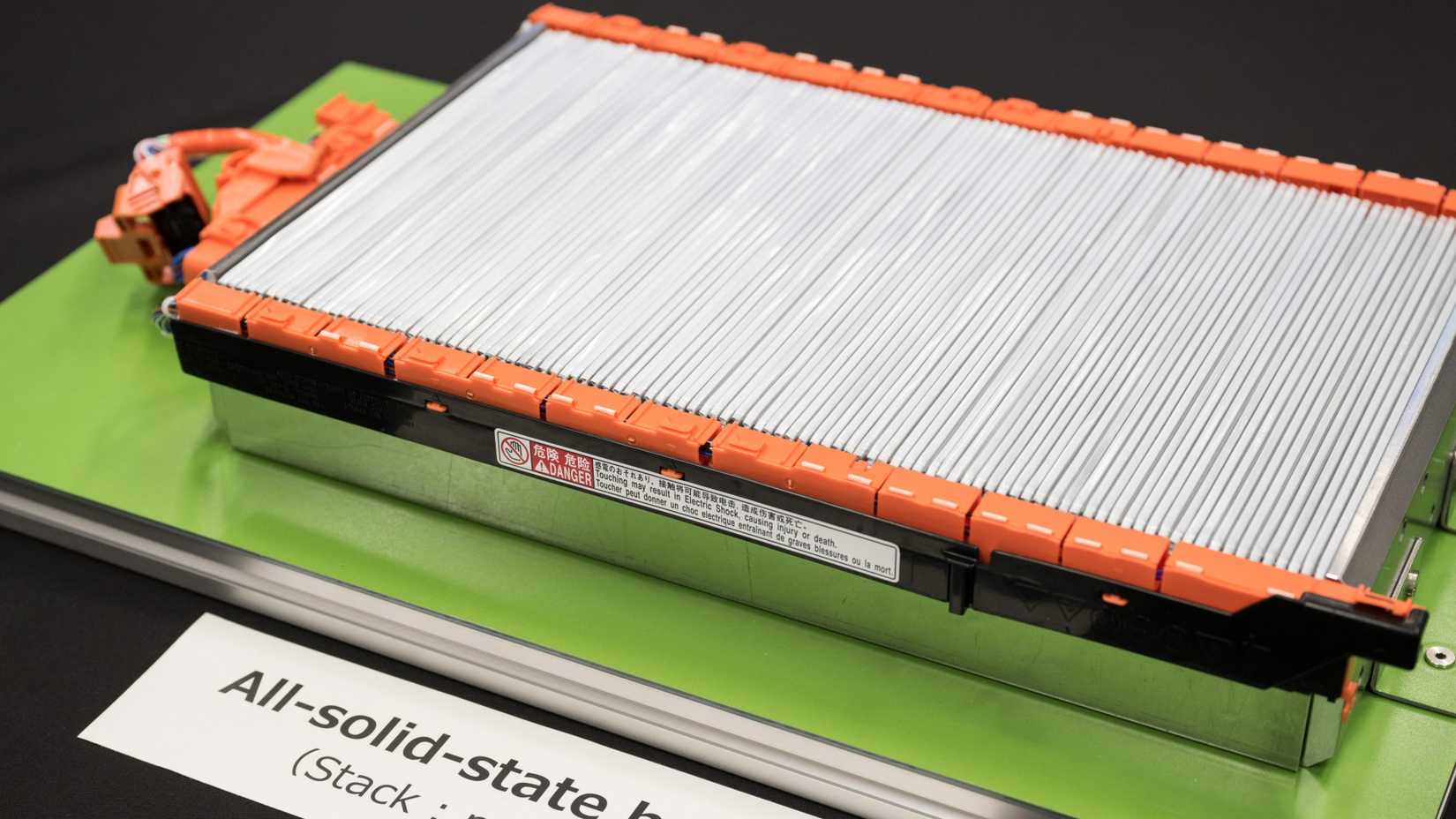
While the technology behind solid-state batteries is promising, market adoption will depend on several factors. Consumers' willingness to embrace this new technology will hinge on its proven reliability, safety, and affordability. If solid-state batteries can deliver on their promise of longer range, faster charging, and extended lifespan at a competitive price, they could rapidly gain traction in the EV market.
That said, outside of the technological and production hurdles facing solid-state batteries, they could also drive vehicle prices too high for everyday consumers. As of now, Samsung is only testing these batteries within the premium EV segment, hinting at the fact that they might be a bit pricey for most people.
Local predators will LOVE the targets sitting immobilized for 10 minutes or more.
When you can partially fill your gasoline tank in under 3-5 minutes and scoot [and you're probably not on empty], you're less of a target.
If you're charging an electric vehicle, it's probably because you NEED to.
Again, real target-y. No thanks.
A lot of these e-vehicle lovers are 40th parallel people - they live below the 40th parallel, and don't have to worry much about the cold killing their cars. Good for them.
[[ A lot of these e-vehicle lovers are 40th parallel people - they live below the 40th parallel, and don’t have to worry much about the cold killing their cars. Good for them.]]
They can sweat and smell up their shiny new ev’s because they can’t run air conditioner while driving long distances then lol

With full deference to the “I’ve heard this old yarn before” sentiment, I have a couple of points:
(1) This isn’t coming from a startup operation off a grad student’s research project: it’s Samsung. They obviously believe in what they’re doing and have the resources to push this across the finish line. Whether that line is a profitable point is what remains to be seen.
(2) My expectation is that their announcement is coming now simply because now that samples are being passed around, they can’t really hide what they’re doing any longer. Investors would want to know what they’re doing, too.
(3) While on that point: Samsung is a publicly traded company, so they really can’t make outlandish claims that can’t be backed up (or at least approached).
I find this intriguing, too, but with my own questions:
(a) Can they provide a 600-mile solution without exacerbating the weight issues with existing EV battery tech?
(b) Can they show that their SS batteries avoid the fire hazard inherent to the non-SS tech employed today? (that’s supposed to be true for solid state solutions)
(c) I agree with you: weather considerations are going to be big.
(d) The discussion about a ‘20 year life’ _should_ be the result of recharge cycle estimations... but yes, real world scenarios need to be checked out.
(e) The cost increase may be a factor, but I’d do the math to balance that against the convenience of never having to find and use a gas station again. Also, a vehicle with such a battery system might actually be relevant on the used car market... I wouldn’t touch a used EV today under any circumstances.
If all those boxes are checked... then they really do have something big: heck, while charging from your house is obviously the most convenient way to go, a 500+ mile range should be good enough for 98% of most people’s driving needs. Even on the road, a ~10 minute recharge is fine.
Heck, I have no vehicle with a range longer than 400 miles and beyond the 5 minute gas fill-up, I usually add 5+ minutes to find a gas station (not that it would be easier to find a charging station, but all that to say “it’s comparable”. Even at a 20% degradation off the 600 mile claim, that still beats everything I have today with ICE power.
In other words... if Samsung meets or comes close to those claims... I’d have to consider it.
“A 9-minute charge time to reach 80% capacity on a 600 mile range battery?”
The amps to do that must be huge - tens of thousands. Wish they gave enough data so we could figure it out.
Man, that’s a BIG BATTERY!
“Challenges of scaling production and cost remain”
indeed ... the EXACT same stumbling blocks of EVERY new magic battery technology touted for the last 50 years ... followed by “more money is needed for research and development” ...
turns out though, after 50 years, LIon and lead/acid are STILL pretty much the only high-capacity battery technologies in common usage ...
600 miles in a model S sized EV would need ,150kWh. 80% of that is 120kWh, a 9 min charge is 6.6C so 120x6.6 is 799kw for 9 min. The version 4 of the NACS standard plug can do 1000V at 1000amps max or 1000kw so yeah the plug and the standard support a 6.6X rate charge on a battery that size. You would need a V4 supercharger with a Tesla megapack behind it so the grid doesn’t see 800kw rates. You charge the megapack using 480V triple phase commercial building power at say 162kw 24/7 that fills said megapack to it’s rated capacity of 3900kWh. You could have four superchargers running off one megapack that’s only 0.75C for the megapack and the grid still only sees 162kw which is 194amps on each phase of that 480V3P. Each megapack holds 32 charges for a 600 mile Tesla S and would replenish 1.35 charges an hour so with a full megapack you get 65 charges per day since you can replenish what you lost as you discharge the megapack. That’s a dumb way to use a megapack since it can take much more than 3/4 of a C rate.
Typical pad transformers are 750kva 480/3p
Here’s a typical one it’s like 9 grand referb.
750kva from a 12,000V triple phase power line is 22.2 amps on each phase from the pole hardly a huge load post substation grid distribution lines are rated in the thousands of amps each with three on each pole.
With a single 750kva supply to a megapack you get 32 charges from the pack plus 150 more from the supply per 24 hour period. Split between 4 stalls is 45 charges per stall per day. If you had 9 min charges that’s 6 hours of back to back charges at each of the four stalls. So say 3 hour rush in the morning and 3 hour rush in the evening with back to back continuous use. If each stall had a megapack it quadrupole the number and you don’t have enough hours in the day to charge with 9min charges even at back to back 24/7 charges the packs are too big at that point. A megapack is stored in a 20 foot shipping container sized box which is smaller than the underground tank size of a typical gasoline pump station which would have four or more of those. One for 87,90,93 and diesel at least.
So yeah you could have 9 min charges with standards and equipment available today that would fit under the space of the four spots above then charging. You can bury the 3 megapacks and the three 750kva transformers for 22 hours of back to back 9 min charges on four stalls.
Scale up or down from there. Two packs and four stalls is 11 hours of back to back charges. Then realise that virtually no one drives 600 miles regularly. Twice per year for over 400 miles in a day is the American norm. With daily distance under 37 miles as the norm.
A model 3 sized 5 passenger car needs 64 kWh to go 360 miles so double the above numbers of charges per day available you run out of hours not capacity of electrons with one megapack and normal sized EVs not 600 mile edge case fringe use.
The economics make a sokid case too. A megapack is 1.2 million, the 750kva is 8 grand so a rounding error. Supercharger stalls are 150,000 each and each has two plugs so 300,000.capex is then 1.5 million.
Going rate for nontesla cars at superchargers is 43cents per kWh retail. Charging over a 6 hour rush back to back. Three morning three night and no other charges would give a gross rev of $7430 per day or 2.7 million per year. Wholesale power is 3 cents per kWh so your power costs are $189,000 per year out of your gross rev. Still the payback period is under 1 year. The megapack is only doing less than a 1C rate hard even stressing it at less than once discharge cycle per day you are putting in while taking out with dips to only half empty at peak hours. LFP cells doing less than 1C to 50% depth of discharge can do 20000-30000 cyckes. Note the scales logarithmic on the left. A full year is only 365 half DOD cycles those megapacks will calender age out first at 15 years. You can see from the economics why EVs are a huge money maker and Elon vis Tesla is the richest man on earth those superchargers are literally money machines.
Still 43 cents per kWh is cheaper than 93 per mile in a model 3 Vs S60 sized ice turbo.
Model 3 uses 180wh per mile that’s 5.5 miles per kWh or 7.3 cents per mile if charged at 43 cents per kWh.
S60 Volvo has to burn 93 which is $3.28 right now via gasbuddy at 28 mpg that’s 11.8 cents per mile so superchargers is still cheaper by 33% and that’s using expensive retail superchargers. At home we get power for 8 cents per kWh so home charging the model 3 is 1.45 cents per mile a factor of 10 cheaper then 93 octane.
Add in the fact that the Model 3 costs less per month in lease vs what the S60 cost per month means from mile one the Tesla was less in capital AND operating costs it’s a win win. Plus FSD forehand free driving and auto follow in traffoc. I will never but an ICE car again. Truck yes for truck thinks and truck things only but for commuting and city to city travel nope Tesla every day all day. It’s money in my bank account ten times less per mile vs the S60 that just sits there for the wife to take to the store if I’m out of town or she is impatient to let me get home and us go in the Tesla.
https://www.powertechsystems.eu/home/tech-corner/lithium-iron-phosphate-lifepo4/
120kWh to take a model S sized vehicle from 0 to 80% if it had 600 miles of range.
Tesla S use 250 watt hours per mile so 600 miles is a 150kWh sized pack. 80% of that is 120kWh.
V4 supercharger standard maxed out in testing for it’s international certs at 1000 volts and 1000amps through the stock NACS plug my buddy Shaun is an engineer with Tesla Austin. They got their cert so they passed the safety tests. 1000V and 100amps is 1000kw
120kWh in 9 min is 6.66C so you need 792kw over 9min. Using the 800V standard pack voltage that all the majors are using now KIA Hyundai,Benz, BMW, VW...You then need 990 amps just under the limit of the latest V4 standards. There is your answer. Tesla also has the megacharger standard grow Cybertruck and TeslaSemi that’s 1000v and 3000amps but it’s liquid cooled megastandard plugs not passive cooled NACS plugs. 1 megawatt for NACS and 3 megawatts for megachargers. Megapacks hold 3.9 megawatts each so they would support 4 V4 superchargers or one megacharger at less than 1C rates on the packs which is not stressing them at all. They could do 4C and still have 2000 cycle lives if using LFP cells. With a 6 month payoff and 365 cycles per year you could do 4C and burn them out in 5 years with a 10 times ROI still $$$$ laugh all the way to the bank. Chargers are money making machines.
CATL would like to join the chat with sodium ion which they took from the lab bench to mass production in 5 years. One third the cost of lithium ion tech it’s why those are already in sub $10000 EVs that would kill every domestic automaker herself they were allowed to be sold here. They meet European crash tests which are harder than ours. If a smart car passes fedgov tests any four door hatchback sized car will too. BYD has a $14,000 plug in hybrid that seats 5 is the size of a Model 3 Tesla and gets 108mpg when in hybrid mode. Mexico gets them next year when BYD opens their factory there. They won’t be $14k probably 25K and they will.sell out day one for whole years production run bank on it.
These guys went gigafactory this year too.
https://natron.energy/our-technology
Natrion would also like to join the chat.
I live at the 40th parallel in the Midwest. There is about a 3 month window for the weather to potentially knock the stuffing out of battery range. If an EV is the only household car, you can't really make advanced travel plans during that time period which is the end of November thru the first couple weeks of February.
Handmade until it’s automated.................
Which it won’t be
bttt
“120kWh in 9 min is 6.66C so you need 792kw over 9min...”
Didn’t realize they charged at 1000 volts. They must put bunches of cells in series to accommodate that voltage.
Do you know the charging efficiency. In other words, how many kwh do you need to put in over and above what the batteries retain. Can’t be much because otherwise the batteries would get real hot.
Disclaimer: Opinions posted on Free Republic are those of the individual posters and do not necessarily represent the opinion of Free Republic or its management. All materials posted herein are protected by copyright law and the exemption for fair use of copyrighted works.